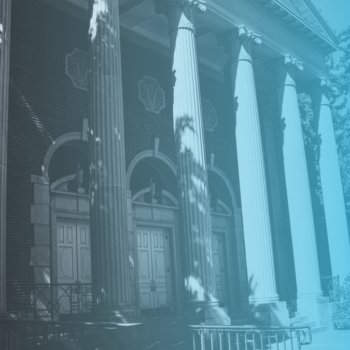Selecting the most appropriate credit card for teachers is critical to their schools’ effective and optimal functioning.
You probably spend a significant amount of money on classroom materials, lunches, and professional development. Perhaps, you bought some school stuff on credit.
While this can be your norm—and you’ve gotten quite used to it—for rookie instructors, it can be unfamiliar territory.
While policy and financial changes take time, you can lower your out-of-pocket education costs by taking advantage of credit card benefits.
Simply by utilizing the proper credit card for your transactions, you may earn huge rewards on every field trip, school party, and school supplies.
Download our checklist of the best free nonprofit tools of 2024
What is the best credit card for teachers?
There is no such thing as a one-size-fits-all credit card, and the sheer quantity of possibilities makes picking the right one for your specific scenario challenging. Fortunately, you can follow the steps below to find one that is suitable for you.
1. Find Out Your Credit Card Score
As long as you use your credit card responsibly, it may be a valuable financial tool, especially when it comes to long-term planning.
However, whether you are approved or not, applying for a credit card often creates a record on your credit report, and having too many of them can be off-putting to future lenders.
This is because submitting many credit or loan applications might make it appear as if you’re in desperate need of money, and lenders may assume you won’t be able to pay off all of your debts.
Before submitting any application, you should carefully analyze your application, ensuring no errors on the application or in your credit file. This means that it would be wise to also find out your credit score in advance.
The higher your score, the likelier you are to gaining access to cards with more benefits. If you find a discrepancy, review your credit reports to determine what’s causing the problem.
If necessary, find ways of improving it, such as altering your purchasing behaviors or challenging the error in the report.
Every 12 months, the federal government mandates that the three major bureaus: Experian, Equifax, and TransUnion provide you with a credit report. Take advantage of them to know where you stand before beginning the application process.
2. Identify the Specific Type of Card Based on Your Needs
The type of school credit card suitable for you will be determined by why you desire or need one. For instance:
Do you already have debt?
Credit card debt relief includes credit card debt settlement as well as credit card debt consolidation.
Without going into detail about debt settlement, there are some options for teachers to reduce debt if they focus on debt reduction.
People with lower salaries are more likely to have several credit cards with high-interest rates and high annual fees.
If they use credit card debt consolidation, they may consolidate all of their bills from the smaller cards onto a single card with lower interest rates and annual fees. Such a shift typically necessitates excellent credit.
The applicant’s amount of debt, credit score, and other financial considerations influence whether or not credit card debt consolidation is possible.
It can be an excellent approach for teachers to pay down debt and improve their overall financial situation.
Do You Want a Low-Rate Card?
Low-rate cards seek to provide a consistently competitive APR, and they can be less of a nuisance than switching cards every time the 0% promotional period expires.
When choosing a low-rate credit card, look for one with the lowest annual percentage rate (APR).
If you already have a credit card and wish to transfer a balance, check the interest rate charged to the rate you’re presently paying to ensure you’ll save money by sharing your amount.
Do you wish to improve your credit score?
People with a poor or limited credit history may benefit from credit builder credit cards. It’s often easier to qualify for because they’re intended for people who wouldn’t otherwise be eligible for other credit cards.
These cards usually have a higher interest rate and a lower credit limit. If you use them wisely and pay off everything you owe each month in whole and on time:
- You’ll avoid paying interest, effectively turning your credit card into an interest-free loan.
- You’ll also establish a level of trust with your lender, which will help you improve your credit rating and qualify for higher credit products in the future.
Do you want to use it on vacation?
Most credit cards have international transaction fees, so if you plan on using one while on vacation with your school, you might want to consider an overseas credit card for schools.
These credit cards don’t incur fees if you use them in another nation, so they’re an excellent way to keep track of your vacation spending.
Using an international credit card, for example, can reduce the amount of cash you need to carry and eliminate the hazards of running out of money while traveling.
However, you should avoid exceeding your credit limit or making late payments because you will be charged a fee.
Do you wish to make purchases with your card?
Purchase credit cards frequently include a 0% interest term during which you can use your credit card to pay for your purchases and avoid paying interest on what you owe if you pay back on time. They help spread the cost of large purchases over several months.
They also provide purchasing protection under the Consumer Credit Protection Act. If something goes wrong with your purchase, lenders are held equally accountable.
For example, if the company from which you purchased goods and services goes out of business or if your goods and services do not come, you’ll get a refund.
Do you want a balance transfer card?
A balance transfer credit card for teachers is meant to help you pay less interest on your existing credit card obligations.
With this in mind, you’ll need to decide whether you want the highest number of months with a 0% interest rate (which entails a greater balance transfer charge typically to pay upfront) or if you’d prefer a shorter 0% interest rate period (with a lower fee).
If you choose the latter, make sure you can pay off your debts during the introductory 0% rate period, or you’ll be charged with high-interest charges on what you still owe when the 0% rate expires.
Do you want a balance and a purchase card?
Consider the introductory rates for each balance and purchase card while making your decision.
Some cards offer a 0% APR on balance transfers and purchases for the same number of months, while others may give a longer 0% APR on purchases than on balance transfers, or vice versa.
Consider what is most important to you. If you know, you’ll be able to pay off any new purchases fast, but it’ll take you longer to pay off your balance; the ideal card for you is likely to offer a longer introductory rate on balance transfers but a shorter rate on purchases.
Do you want to receive incentives or earn rewards?
As part of your credit agreement, getting a reward credit card can provide you access to several beneficial advantages and incentives. Consider the following scenario:
- As you use your shopping or store credit card, you can earn vouchers or in-store points for your favorite stores.
- When you use a cashback credit card for school shopping, you can get money back every time you use it.
However, these cards often demand a fee to access these perks, and if you don’t make your monthly payments on time, you may lose access to these services entirely.
3. Ask the Right Questions
It’ll be easier to locate the ideal credit card for you if you compare deals on some comparison websites for any form of credit card for teachers you want to apply for.
All you have to do is tell them about your financial situation, including your income and how you intend to use your new card.
Then they’ll present you with a personalized list of credit cards that you can sort by interest rate, charges, and the likelihood of being accepted if you apply.
This can help you maintain your credit by lowering your chances of getting turned down and needing to reapply soon.
If your application is approved, you’ll receive your card in the mail, along with your credit limit and interest rate.
Remember that the quoted APR only has to be up to 51%; your financial circumstances will determine the actual rate you’ll get. You’ll only need to activate your card once you receive it, and it’ll be ready to use.
What If Your Application is Declined?
It’s not mandatory for credit card companies to give you a credit card. If your credit score is low or not a reasonable risk, your application may be denied.
If you wish to verify your credit file, ask the provider which credit reference agency they utilized.
Although credit card companies have the right to refuse you credit, they are not authorized to do so in a discriminatory manner.
This means companies can’t refuse to provide you credit based on your race, gender, disability, religion, sexuality, or location.
If you feel discriminated against, you can always file a complaint or get an adviser to look into your case.
What’s Next After You Find the Right Card?
It’s crucial to choose the most significant credit card, but it shouldn’t end at that.
To adequately benefit from your card, use it correctly. If you’re working to build your credit score, ensure that you pay your expenditures in good time and don’t exhaust all of your offered credit.
If you are given the 0% APR agreement, ensure that you adhere to your debt settlement strategy. Use your card each day for ordinary purchases and pay your sum fully every month to get credit card points.
Whether you’re looking to borrow cash, get some rewards, or establish credit, the school credit card you use should assist you in attaining your financial objectives in an effective and efficient manner.
There isn’t a single card that is appropriate for all teachers. Different teachers, like everyone else, have differing financial demands and situations.
Admittedly, many credit cards, such as store credit cards, are compatible with the daily routine and requirements of the teaching profession. Still, individual teachers need to examine the specific features of credit cards and apply accordingly.






